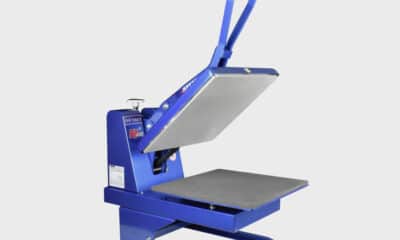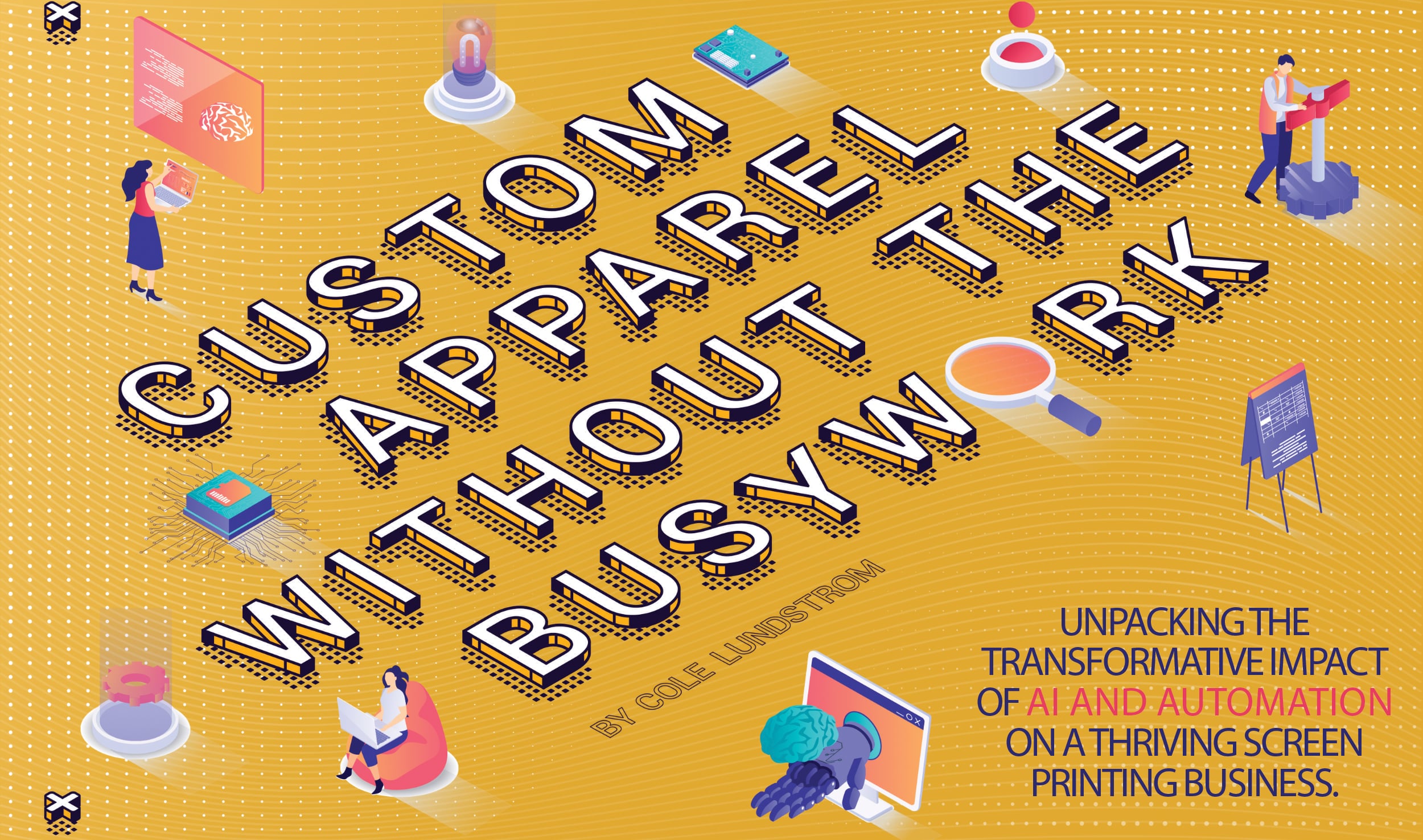
Published
9 months agoon
WHEN I FOUNDED Shirt Agency 12 years ago in Huntington Beach, California, the impact of software automation platforms and artificial intelligence (AI) on the day-to-day operations of a custom printing shop would have been impossible to imagine. Now, we regularly use tools including ChatGPT, Midjourney, Zapier, and Printavo to streamline workflow, save time, and ultimately grow the business.
PROMPT AND PROFESSIONAL
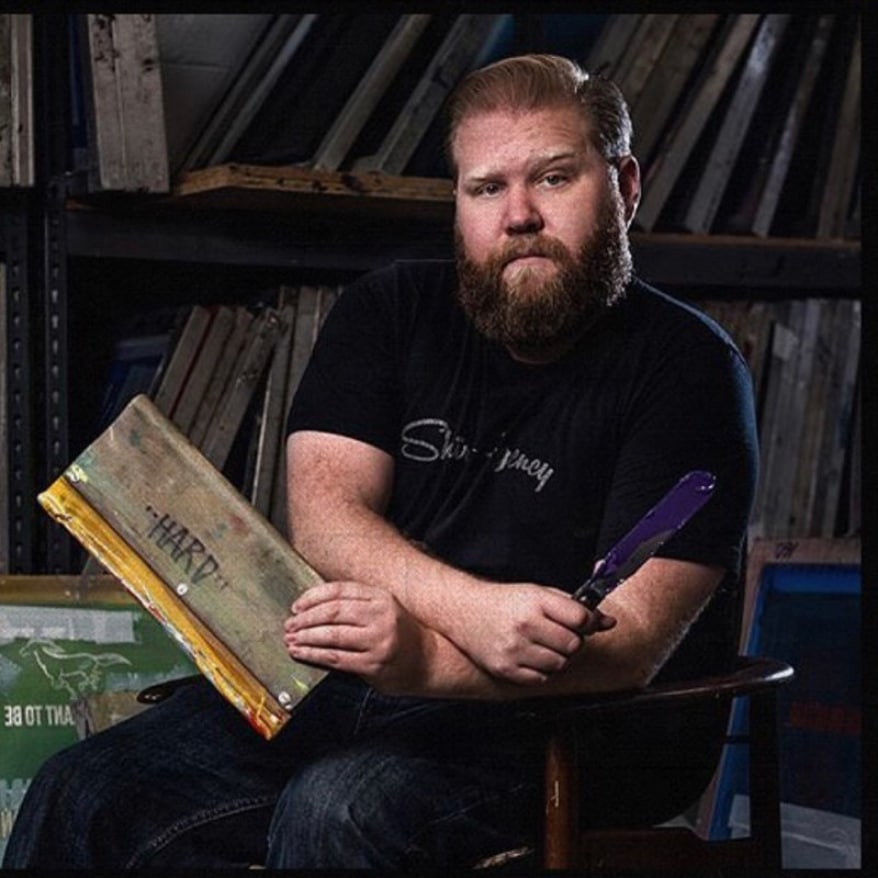 Cole Lundstrom
Cole Lundstrom
We receive a high volume of inquiries from potential customers, many of which can be repetitive and time-consuming to address. Letting ChatGPT handle routine customer inquiries has saved countless hours by enabling my team to focus on more complex issues. Although the AI-driven chatbot does not provide a complete customer service replacement, integrating it into our Slack channels empowers our team to draft prompt, professional responses in seconds for copy-pasting into email or any other channel.
In one recent case, a customer was unsure about which ink to choose. Instead of having a team member spend valuable time explaining the options, ChatGPT was able to provide detailed information on the benefits and drawbacks of various ink types. For this and similar inquiries, ChatGPT can empower even the newest hires to provide accurate, consistent responses based on both our own information and the larger OpenAI dataset used to train the model. This technology is still in its infancy – staff still proofread answers before sending – but the time savings and professional tone are remarkably valuable.
AUTOMATION INTEGRATION
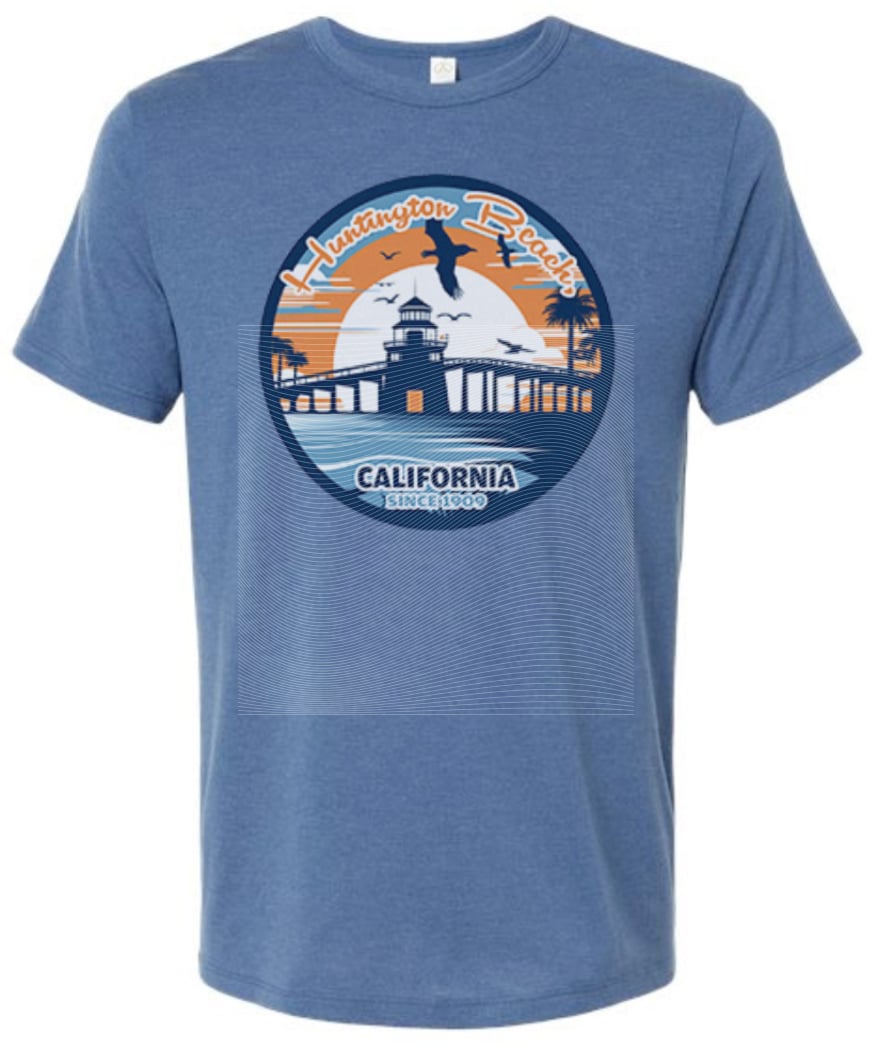 The graphic for this local surfshop tee began as an image generated by Midjourney based on the prompt, “A graphic logo of Huntington Beach, California landmarks made in blue, orange, and black on a white background.”
The graphic for this local surfshop tee began as an image generated by Midjourney based on the prompt, “A graphic logo of Huntington Beach, California landmarks made in blue, orange, and black on a white background.”
As we look toward improving our service, we’re now developing a system to connect ChatGPT’s API directly to the APIs of other automation systems. One is Printavo, a platform we use to manage business operations from order management to invoicing. Among other capabilities, this system automatically issues order-status updates, payment requests, and other customer communications.
Another automation tool, Zapier, helps prevent managing orders and materials from becoming a nightmare when we get swamped. This system allows us to create “zaps,” which use if/then logic to automate repetitive tasks like data entry or order updates. For example, when a new order is created in Printavo, Zapier automatically sends a Slack message to the production team to keep everyone in the loop and prevent miscommunication. Automatic Slack notifications simultaneously keep us apprised of payments received, mockup requests for our artist, and updates to our Trello cards with order information for our printers.
Adding ChatGPT to the mix will amplify this kind of automation. For example, once Printavo generates a quote, a zap could trigger ChatGPT to ingest the invoice data, then write a draft of an email thanking the customer and summarizing the order. Upon receiving the draft via Slack, a staff member could review the message before the final email to the customer. Hypothetically, this could be extended to a fully automated customer service portal with no staff involved (although we don’t trust it enough for that just yet).
AI FOR ART
As my business grew, I realized many clients need more than just a print shop. Assisting with artwork is one way to serve them better and to create additional opportunities. Midjourney, an AI-powered tool that generates images from user prompts, has become an indispensable part of our decision-making process for these kinds of projects.
We recently worked with a local coffee shop to create not only a basic company logo for their upcoming store opening, but also a wide variety of apparel for an in-store line. Finalizing the artwork for this kind of project still requires the skills of a graphic designer with experience in Adobe Photoshop and Illustrator. However, Midjourney helps the art team key into trends and patterns; brainstorm designs by rapidly generating multiple variations of a theme; and ultimately thrill clients with print-ready artwork in a matter of hours. In this case, we quickly iterated several ideas to bounce off the client and adjust our focus from there.
For another recent job, the client requested a unique design that incorporated local landmarks. Thanks to Midjourney, my team and I were able to dedicate more time to research and sketch out ideas for what resulted in a one-of-a-kind, locally inspired design the client loved. Ninety percent of it was designed by an image created inside Midjourney that we simply cleaned up.
UNCOMPROMISED GROWTH
We’ve noticed a significant increase in customer satisfaction since we automated customer communications. Before, there were instances when we’d receive negative feedback from customers due to slow response times or inconsistent information. Our clients now receive prompt, accurate information, and we can focus on creating a better overall experience and providing personalized attention when needed.
At the same time, we’ve been able to accommodate the additional customers that come with growth. Leveraging tools like ChatGPT, Printavo API integration, Zapier, and Midjourney helps us scale by taking on more clients and expanding our product offerings without sacrificing the level of service our customers have come to expect. We’ve been able to streamline the workflow, save time, and make more informed decisions, all while focusing on what truly matters – providing exceptional products and customer experiences.
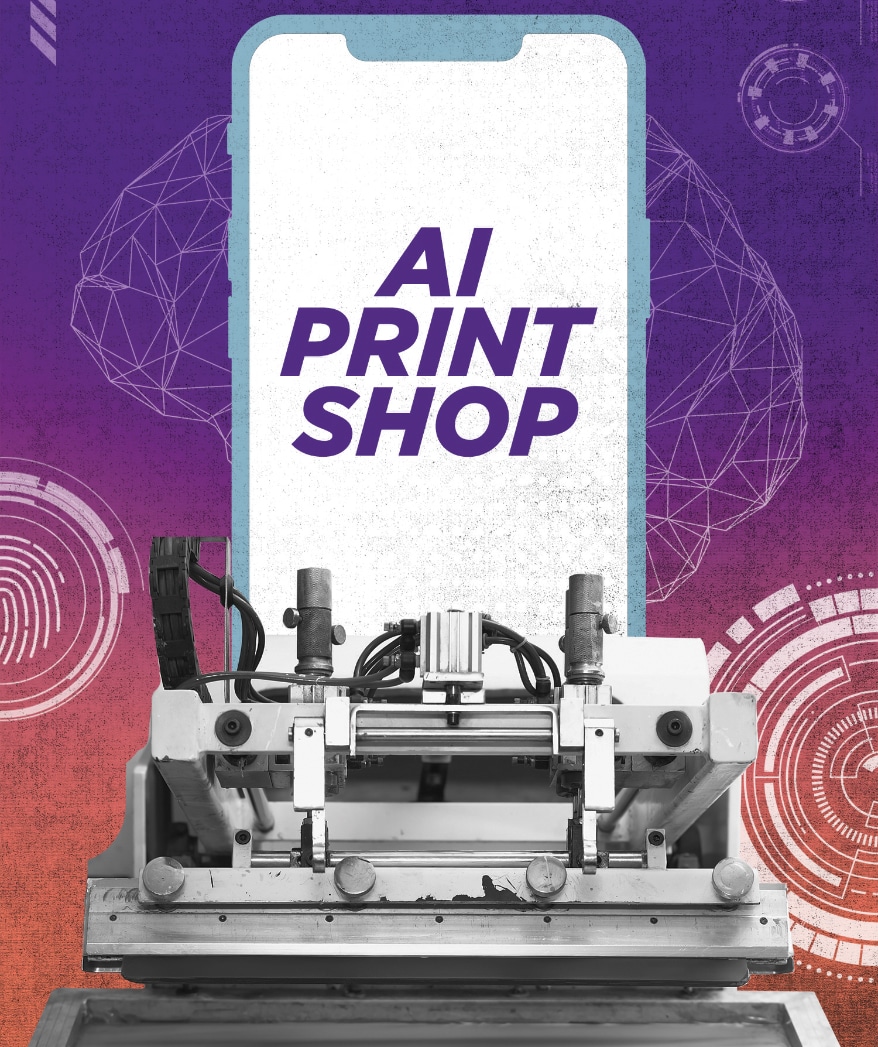
We asked the Brain Squad whether they have integrated ChatGPT or other AI. Here’s a sampling of what they had to say:
-
Yes. Everyone should be experimenting with this. But like anything, it takes time to use it and harness the results properly. — Marshall Atkinson, Atkinson Consulting
- Yes. I use it for ideation, outlines, and conceptual pieces that I pass to my designer to better understand my vision. I need to play with it more, but I like the support it gives me. — Jeremy Picker, AMB3R Creative
-
A little bit for social media posts and for rewording things, and I’ve looked into financial advice as well with it. I want to take advantage of it for logistics and automations. — Elisa Serrano, Don’t Lose Hope Screen Print
- I designed a logo for a hockey team with AI. It was the coolest hockey logo. Honestly, I was a little terrified by it. We will all be replaced by robots soon. — Matthew Pierrot, GetBOLD
- We use it daily! [We are] working on our own chat bot now. — Davis Slagle, Bee Graphix
- I have not yet dipped into using these tools. — Joe Ortinau, Ortinau Art
- Yes, we have been looking at different ways that AI can be used in our business. The addition of AI into software like Zapier is a game changer. — Shaun McCarthy, GL Imprinting
- The only time I’ve used ChatGPT was to make a lunch recipe. I would love to see it being used for some of the rote customer service support we do – stuff like “where is my online order?” — Ian Graham, Feels So Good
- It’s on my to-do list! — Kristin Deutsch, Hair of the Dog Graphics
- We have used Chat-GPT to help with blogs, customer slogans, and professionally wording emails. — Ryan Toney, P&M Apparel
- I am part of the beta testing of Adobe Firefly. You can now use AI to convert drawings to vectors, which will take out a part of the industry producing these assets. I have already been asked to print peoples’ designs that have been generated by AI, which means the industry will need to know how to use simulated process printing or potentially lose work to DTG. I am also thinking of swapping my podcast postproduction and our accountant to AI. — Chessie Rosier-Parker, Squeegee and Ink
-
Have been using AI since 2016, way before ChatGPT. It is very easy to use, but most of the applications are low-hanging fruit, and [most people] do not yet understand the depth that AI brings to the market. It goes way beyond making blog posts, video scripts, and email responses. — Mark Coudray, Coudray Growth Tech
- Not yet, but [I] have played around with it a little. I believe we will really see the impact of this when DTF printers become a standard piece of equipment in every shop in the next few years, and [when] DTF becomes a larger piece of the custom decorating pie. — Charlie Vetters, Organic Robot Designs
- We only use AI for our phone lines, but really only to direct calls that come in, as we still feel the need for a human to answer the phone. — Shamus Barrett, 7 Corners Printing
-
Yes, to write processes and to re-write articles I’ve already written. — John Magee, Avient Specialty inks
- We are currently exploring AI options. I am intrigued by all the captivating images Marshall Atkinson keeps sharing through his Midjourney exploration. So far, the images and content we have derived from AI have yielded some great inspiration for our designers and led to creative logos. — Jessica Tillery, All Quality Graphics
- I have. I’ve asked it questions to just see responses. It’s truly remarkable – it broke down mesh counts, Newton Tension Meters, durometers, etc. — Sam Lapcevic, Branded Threads
-
No. [I’ve been] too busy surviving and serving customer needs to try to find free time to understand everything that is happening. But I am obviously very interested in serious information. — Larry Mays, Mays Marketing Group
- Still working on getting that cell phone. — Andy MacDougall, MacDougall Screen Printing
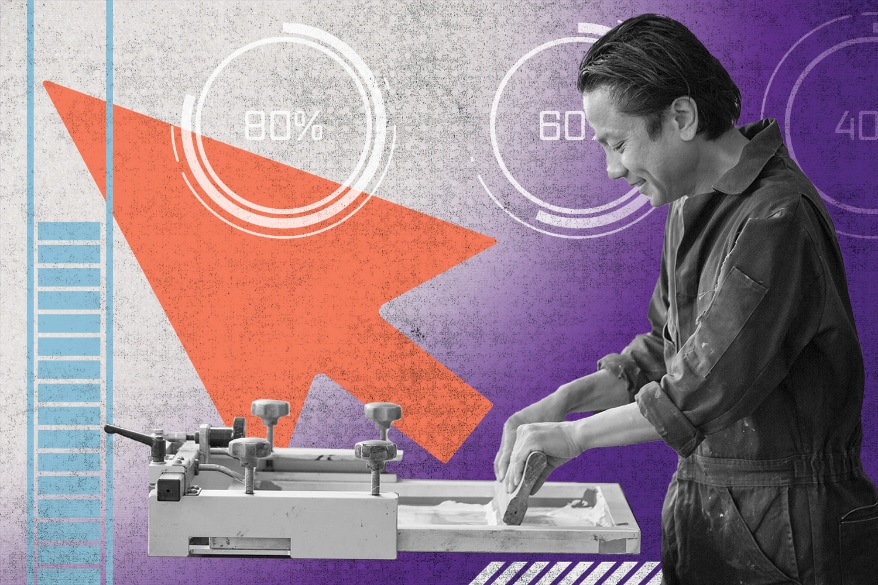
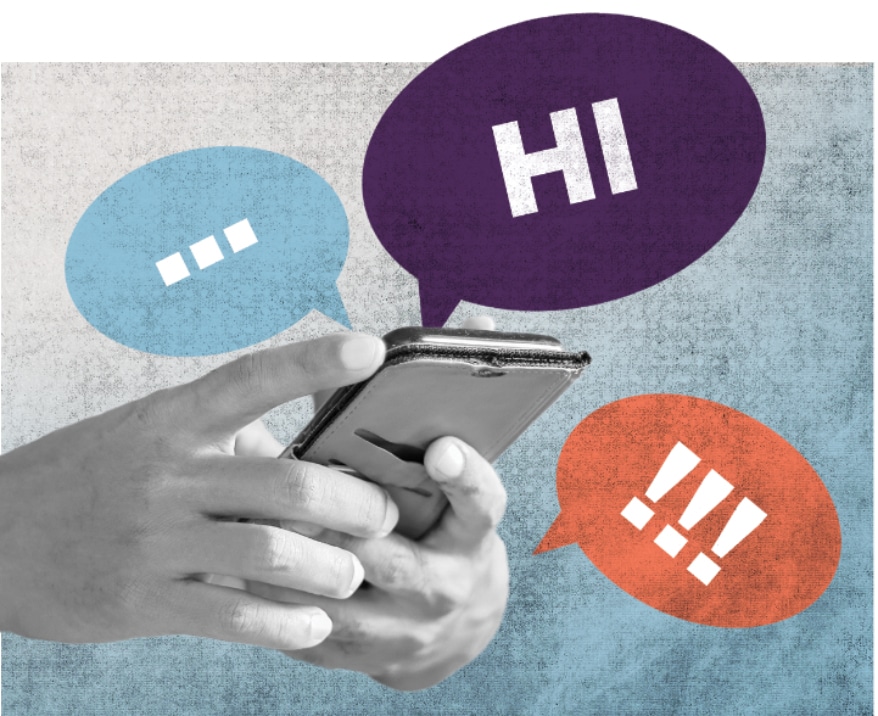
What’s the Brain Squad?
If you’re the owner or top manager of a screen-printing business, you’re invited to join the Screen Printing Brain Squad. Take one five-minute quiz a month, and you’ll be featured prominently in this magazine, and make your voice heard on key issues affecting screen-printing pros. Sign up here.
SPONSORED VIDEO
Let’s Talk About It
Creating a More Diverse and Inclusive Screen Printing Industry
LET’S TALK About It: Part 3 discusses how four screen printers have employed people with disabilities, why you should consider doing the same, the resources that are available, and more. Watch the live webinar, held August 16, moderated by Adrienne Palmer, editor-in-chief, Screen Printing magazine, with panelists Ali Banholzer, Amber Massey, Ryan Moor, and Jed Seifert. The multi-part series is hosted exclusively by ROQ.US and U.N.I.T.E Together. Let’s Talk About It: Part 1 focused on Black, female screen printers and can be watched here; Part 2 focused on the LGBTQ+ community and can be watched here.
You may like
Advertisement

Atlantis Headwear Goes Solar for Sustainable Future

Comfort Colors Announces New Proprietary Dyeing Process Called “Pigment Pure”

10 Production Scheduling Secrets That Will Have Your Team Ready to Rock
Advertisement
Subscribe

Bulletins
Get the most important news and business ideas from Screen Printing magazine's news bulletin.
Advertisement
Most Popular
-

 Case Studies2 months ago
Case Studies2 months agoHigh-Density Inks Help Specialty Printing Take Center Stage
-

 Art, Ad, or Alchemy2 months ago
Art, Ad, or Alchemy2 months agoF&I Printing Is Everywhere!
-

 Andy MacDougall2 months ago
Andy MacDougall2 months agoFunctional and Industrial Printing is EVERYWHERE!
-

 Columns1 month ago
Columns1 month ago8 Marketing Mistakes Not to Make When Promoting Your Screen Printing Services Online
-

 Editor's Note4 weeks ago
Editor's Note4 weeks agoLivin’ the High Life
-

 Marshall Atkinson4 weeks ago
Marshall Atkinson4 weeks agoHow to Create a Winning Culture in Your Screen-Printing Business
-

 Press Releases1 month ago
Press Releases1 month agoSports Inspired Clothing Market: The Influence of Sports on Fashion Forward Looks
-

 Case Studies1 month ago
Case Studies1 month agoScreen Printing for Texture and Depth

